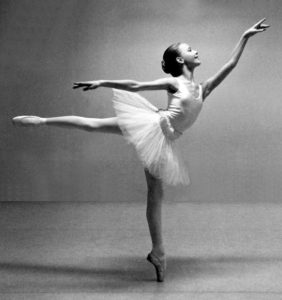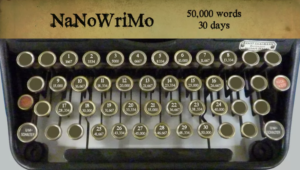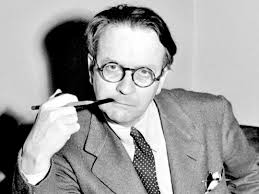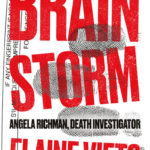An anonymous author has submitted the first 400 words of a work-in-progress. Please enjoy Miss Bryson Loses Her Hat and I’ll have my two cents on the flip side. Share your constructive comments to assist the author in making this intro shine.
Scene one
Once a girl crashed to the floor with a bone-shaking thud before a thousand people, it gave her a clarity of mind she lacked prior to the event. In Lara Bryson’s case, it elucidated too late the hazards of satin slippers on a freshly polished floor, and illuminated, in a flash of searing insight, the vagaries of a God who, in blessing her with an angelic voice, tempered it with the less benevolent bestowal of two left feet.
Yes, He seemed to say, in a voice Lara imagined as a rolling thunderous crack rending the heavens, she could sing as gloriously as the seraphim, just never in company, and never anywhere requiring the use of her legs.
If only He’d bothered to tell her this before she sold every possession, expended every shilling, and endured sixteen perilous hours battened to the top of a London Mail Coach.
Even a hint five minutes earlier would’ve sufficed.
Instead, Lara lay crumpled and mortified. The roar of adulation that had provoked a warm tingling sensation to cascade like a waterfall through her limbs moments before replaced with the frenzied gasps of a mob titillated by the unexpected sight of a lady splayed out like a ragdoll.
Even more lowering, the dismal conviction that her promise to her dying mother to sing for the Queen would remain forever unfulfilled settled like a rock in Lara’s heart.
The clip, clip, clip of boots dashing across a wooden floor interrupted Lara’s fit of the blue devils. She guessed she had about thirty seconds to find a dignified way out of the Ballroom before the crowd reached her.
Or she could crawl.
The odds poor she’d get upright in a graceful manner, and stay there, slinking away on all fours seemed not only the best option, but a fitting end to her wretched evening. Her decision made, Lara clamped her eyes shut, and prayed silently; God, if you wish to keep alive what little trust I still have in You right now, then at least clear a path for me to slink out of here.
“Clear a path everyone, and give the lady some air.”
Lara gasped; never before had she received such a direct answer from above. The request for air an inspired touch. An exotic woody scent drifted over her. Sandalwood. Interesting; she’d thought myrrh.
The voice spoke again, “Are you hurt?”
Feedback:
The intro is reminiscent of the beginning to a fairy tale as it starts with, “Once a girl…” The tag line Scene One reminded me of a script. I’m not sure why it’s there. But overall, I enjoyed the proper British tone of the author voice and the way the girl’s plight was detailed–it’s like Downton Abbey meets Bridget Jones–with an undertone of controlled humor. I sense a Cinderella story coming, although I can’t be sure in this short intro.
Here are a few things for the author to think about:
1.) Add More Mystery – Who are the 1,000 people? In the first sentence, we hear of the girl’s fall. The audience is not emphasized much until we get a hint at the promise she made to her dying mother, to sing for the Queen. If this is indeed a performance for the Queen, why not play that up more? Or at the very least, hint at the once in a lifetime opportunity, the titillation of the crowd, the tension as she builds to the moment where she walks out. The fall is put into the first sentence, very anti-climactic, because the author chose to focus on her mortification in great detail.
2.) Flip the Scene – Imagine this scene starting another way. As the girl’s mind prepares for her big moment (a moment the author holds back but only hints at), she’s haunted by the promise she made her mother on her deathbed. Tension builds. Her palms sweat. Every movement in her routine replays in her head as she waits in the wings of the stage or outside the ballroom, but the crowd noise and her mother’s face haunt her. She is introduced and the music starts. When she walks out under a glaring spotlight, she sees the silhouette of the Queen in the shadows. Everything is the way she visualized it and her mother’s voice fades in her mind. The stage is set for perfection, but that doesn’t happen. The end of the intro comes when she falls. Every reader will want to know – what comes next?
3.) Use of Humor – There is definitely charming humor written into this piece. It appeals to me, very much. But keep in mind that humor can diminish intrigue or lessen the danger in a scene or shift the focus if it’s used too much. (As an example, a smart mouthed detective can appear too confident and invincible if he doesn’t act afraid when a gun is pointed at him. Over time and as the pages turn, the reader becomes insulated to any danger and never fears for the protag’s life.) In this case, we are drawn into Lara’s cynical, self-deprecating humor about the wreck of her life and her big fall when she may resonate more with the reader if there’s a focus on the action, rather than her internal monologue. A sparing use of her humor could be used after the fall, but let the reader feel her anticipation of a promise fulfilled before we know what happens. I get the feeling this author is quite funny, but less can be more to make Lara endearing. Let her think big before reality sets in. It will make the punch line better.
4.) Who is her Prince? – I know this is only 400 words, but I am really intrigued by who this person is at the end. Her savior. This is a tribute to the author’s writing and the set up. There is a lot of internal monologue as the scene progresses, when what I really wanted to know is mentioned above and who this person is at the end.
5.) Scenes are Mini-Stories – I think of each scene in a book like a mini-story. There’s a beginning, middle and end. Each scene should progress the story forward with at least 1-3 plot points. If an author does this, the writing will be tight and each scene serves a purpose. There’s also a character journey within the scene where the protagonist will grow, learn something to advance the plot, or raise more questions to foreshadow what might be coming. With this in mind, I like the intro to a scene to have a strong opener, a tight middle with mystery elements to intrigue the reader, and a foreshadowing of things to come that will keep the reader turning the page. In Miss Bryson Loses Her Hat, this mini-story can be accomplished by sticking with the action building to her fall, with only a hint of how important this is to her and who she is dancing for. The big conclusion of the fall and who comes to her aid can be the foreshadowing and make a great page turner. (Another trick to make a page turner is to split a scene and carry it over into the next chapter. It’ll keep readers up late and you may get an email in the early hours saying, “I can’t stop reading.”)
Conclusion:
I really want to turn the page and read on. Kudos to the author. Overall, I love this author’s voice, but even with that talent, there is still a need for how to create and build on an introduction. Elements of mystery are very important, no matter what the genre. I like to tease the reader with questions as they read on, then build on the suspense to answer those questions as the reader finishes each paragraph. Add more mystery elements as the scene progresses and you’ll hook them deeper and in multiple ways.
Discussion:
1.) What feedback would you give this brave author, TKZers?
2.) Would you keep reading?
3.) Can you imagine this premise starting differently?










